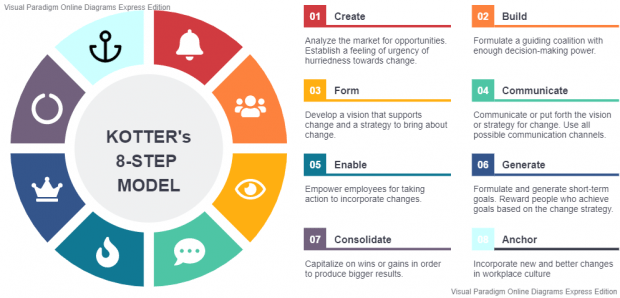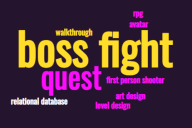The original idea of this 3-part series on digital baby steps was to encourage UAS teachers, who would like to produce more online teaching material but find it hard to make time for it, to take very simple steps toward this goal. With the COVID-19 pandemic here, it is quite safe to say that we can forget all about baby steps.
It might still be worth mentioning that the first part of this series on digital baby steps dealt with learning to make YouTube videos together with the students in an ad hoc manner during their English lesson. The first text introduced a very practical tool called MVP (Minimum Viable Product, see Ries 2011), which was applied to produce the videos, only slightly modified. It meant executing the task, from planning and instructing to doing and finalizing, in a very simple manner requiring “the least effort” in order to save everybody’s time and resources. This tool is more valid than ever in the changed world.
The second part on digital baby steps concentrated on transforming classroom teaching material into online material suitable for self-study by the students. The tool used for producing this material was the PDSA cycle (The W. Edwards Deming Institute 2019) often used in cyclical development projects for Planning, Doing, Studying and Acting. Also valid, even today. Now, with the Covid-19 pandemic dictating the terms in universities, the third part of this series focuses on discussing the “lucky” break regarding urgent digitalization of higher education brought about by the nasty Corona virus.
Digitalisation vision 2030
The digitalization of education has been a key item in education strategies for many years. In February this year just before the pandemic, all Finnish universities and Universities of Applied Sciences signed a letter of intent whereby they commit to promoting the digitalisation vision 2030 which aims at granting access to all national data pools for both individuals and the society in general thus enabling the development of pedagogy and the revolution of higher education (Arene, 2020 b). According to Arene, The Rectors’ Conference of Finnish Universities of Applied Sciences, persistent development work through the DigiVisio 2030 project is more important than ever in these challenging times.
Change Management by Corona
A few lines up, I called the current situation a lucky break. The reason for that is that normally the intent to bring about a major change is strong due to expected change resistance. Accordingly, change management theories underline the importance of establishing a sense of urgency to bring about the desired change. In fact, establishing a sense of urgency is the first step in John Kotter’s (1996) famous Eight-Stage Process of Creating a Major Change, shown in the Image below. In Kotter’s book, organizations are even encouraged to take quite radical measures to establish an urgency, even something like creating a crisis by allowing a financial loss or allowing a similar unwanted event to take place within the organization.

Image 1. Eight-Stage Process of Creating a Major Change (modified from Kotter 1996)
Image 1 shows the other necessary steps in the 8-stage process including for instance formulating a guiding coalition with decision making power as well as communicating the change vision and finally anchoring the new approaches to the work culture. In a normal situation, implementing all the steps would take a great amount of time and effort. In schools and universities, the Corona virus did, in just a matter of days, what no change management team and supportive action from the University Boards and Department Heads could have achieved in months or even years. Common change resistance factors such as “belief that change is unnecessary” or “fear of personal failure” (see e.g. Yukl 2006) seemingly did not play a role here. The Corona restrictions provided the urgency needed and overrode other obstacles.
The Corona Leap
At Metropolia UAS, the doors closed on March 18 due to the pandemic and all teaching was moved online in a matter of weeks, if not days. All of a sudden, everyone was using Zoom or Teams for teaching and for meetings with colleagues, individual students or groups. A great amount of studies were completed in Moodle independently and as collaboration projects in the cloud. Students were given tasks to do presentations on Teams or making YouTube videos to present their end of school year projects. Exams went online – even entrance exams (Arene, 2020 a).
And, what’s more, everything seems to be working well, at least according to the report published on 27 May 2020 by the Student Union of Metropolia UAS. The report found that the students feel that the transition to distance learning has been successful despite the fast schedule whilst acknowledging that the students’ endurance and study motivation have been put to a tough test. In addition, other studies have been initiated, but we will have to wait until next autumn to obtain some realistic data on the results in the form of credits completed and also in the form of feedback from both students as well as teachers.
Action Plan Proposal for Autumn 2020
For many teachers including me, autumn 2020 is going to look very different from the past. We are already preparing for moving all our teaching online so that we will not be caught unprepared should a second wave of Covid-19 take place at some point. Luckily, autumn 2020 will be that much easier to take on, thanks to the Corona leap we had to take this spring. To ensure a smooth and dynamic continuation to the leap we have made, I recommend embracing the following 3-step action plan already now:
- Take advantage of project tools such as PDSA or similar to systematically create new online material and courses based on experiences and feedback from this spring.
- Use the concept of MVP in case lack of time is a decisive factor. It’s better to have a pilot version ready, than nothing at all. We need to remember that all work carries hidden rewards, sometimes in very surprising ways. Getting started is key.
- Make a separate plan for managing your time in the autumn in order to allow for one-on-one online meetings with individual students. This is extremely important if social distancing is reintroduced. Moreover, allowing time for students meeting each other online, in addition to working online together, is extremely important.
As change is the only constant in life, let us continue to embrace the digitalization opportunities brought about by the pandemic in the spirit of DigiVisio 2030. It will all be for the good – step by step.
This completes the 3-part series on digital baby steps, not one minute too soon 🙂
References
Arene. 2020 a. Ammattikorkeakoulujen valintakoe järjestetään etäkokeena.
Kotter, J. P. 1996. Leading Change. Harvard Business School Press.
Metka. 2020. Koronan vaikutukset opiskelijoiden kokemana. (PDF)
Ries, E. (2011). The Lean Startup. New York: Random House US.
The W. Edwards Deming Institute. (2019). PDSA Cycle.
Yukl, G. (2006). Leadership in Organizations. 6th ed. Pearson Prentice Hall.









Ei kommentteja